Khodaldhamis an inspirational, magnificent, beautiful in every way, unique and first of its kind Architectural marvel. Sprawled over vast area playing the node and functions of various activities in guiding and acting towards the community development. It is truly a spiritually uplifting experience to witness the faith of the devotees.
It is one of the largest comprehensive Hindu temple, measures 298 ft, 7 inch long, 252 ft, 5 inch wide and 159 ft, 1 inch height, covering vast area. In this magnificent temple, astonishing idol of Maa Khodal in garbh gruh surrounded with idols of Maa Amba, Maa Bahuchar, Maa Verai, Maa Mahakali, Maa Annapurna, Maa Gatral, Maa Randal, Maa Butbhavani, Maa Brahamani, Maa Momai, Maa Chamunda, Maa Gel, Maa Shihori, MaaNagbai, Maa Harsiddhi, Vir Hanumanji, Ganpatiji, Ram-Sita and Radha-Krishna are set in nrutya mandap following pious consecration.
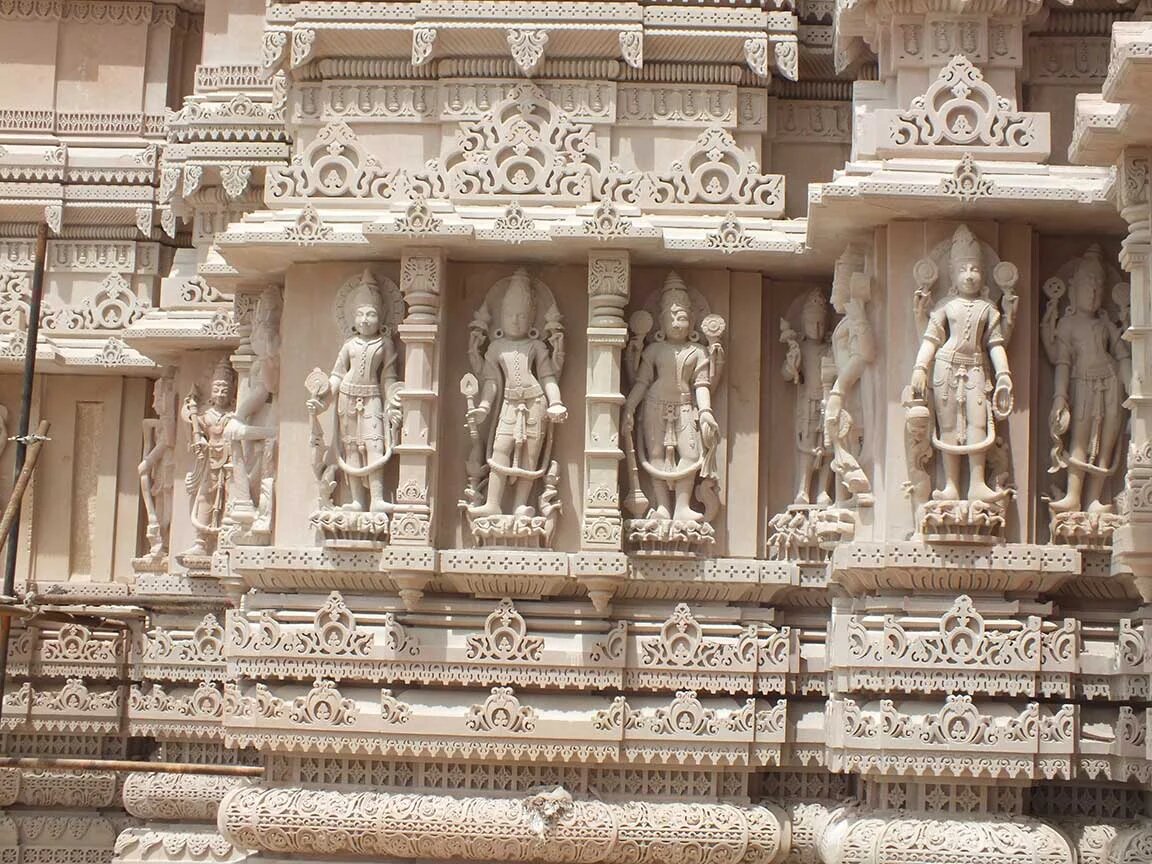
To build Khodaldham Temple, lands were seen and surveyed at many places, also land were seen near kagvad village between Rajkot and Jetpur and considered to be appropriate. Saurashtra has the largest number of Leuva Patidar community and Kagvad being the centre part of Saurashtra, on the other side appropriate water supply of the river Bhadar and hundred acres of land was available at a place, it was decided to build a temple of Maa Khodal near Kagvad village.
Nareshbhai Patel came up with the idea of building the Khodaldham temple in 2002 which is a symbol of the unity of the entire Leuva Patel community. When Nareshbhai Patel's five-six friends were sitting in Shivotri Wadi, Nareshbhai Patel said to his friends that such a big Leuva Patel society, despite such great strength, the society has been scattered. If this society gathers, the strength will increase many times and this strength can be used for building the entire society. The idea was good but the question was how to tie the society together? Finally the idea of ââbuilding a temple came up. The temple can be the place under which the society can gather and the temple can be the umbrella of the society.
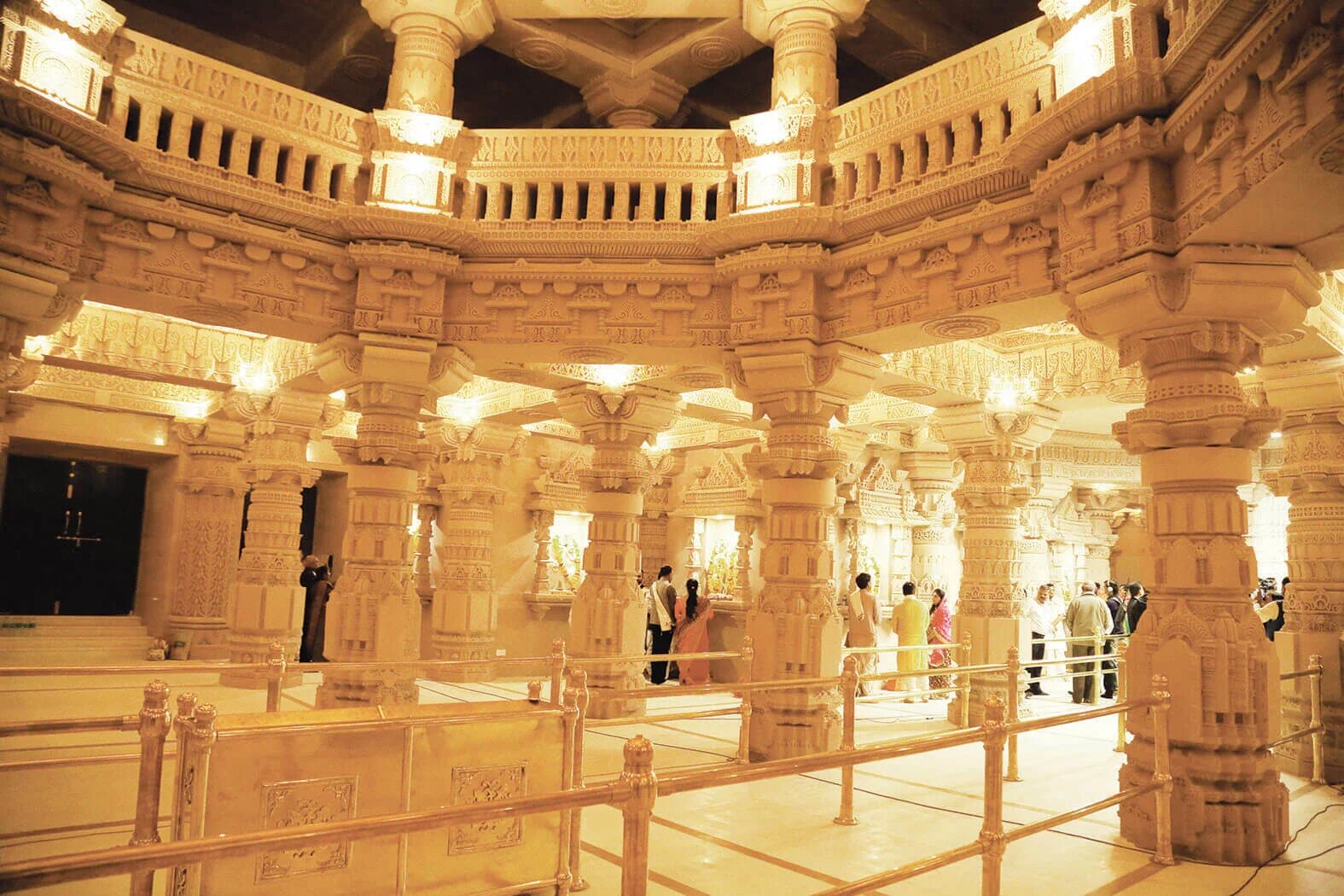
Shree Khodaldham Trust-Kagvad has been constructed a temple of distinctive sculpture and according to Vastu Shastra near Kagvad village of Jetpur taluka of Rajkot district. The Khodaldham Temple has been constructed with 2 lakh 30 thousand cubic feet of stone brought from Bansi Pahadpur, which originate from a mine near Bayana village in Bharatpur district of Rajasthan.
The width of the temple is 252 feet, 5 inches. The length of the temple is 298 feet, 7 inches while the height from the ground to the flag pole is 159 feet, 1 inch. A 14-feet-tall, 6-ton gold embedded sacred pot has been installed at the summit of the Khodaldham Temple. A 40-feet-high flag has been hoisted near the Kalash. A flag of fifty-two gauge (156 feet) is flickering over the pole. About 650 statues erected by the artisans from Orissa have been erected from Mandovar to the summit of the Khodaldham Temple. Pillars, beams, pylons, roof designs are all carved by artisans from Rajasthan. Khodaldham Temple is included in Mahameru Prasad, which which is shaped like a big mountain is called Mahameru Prasad.
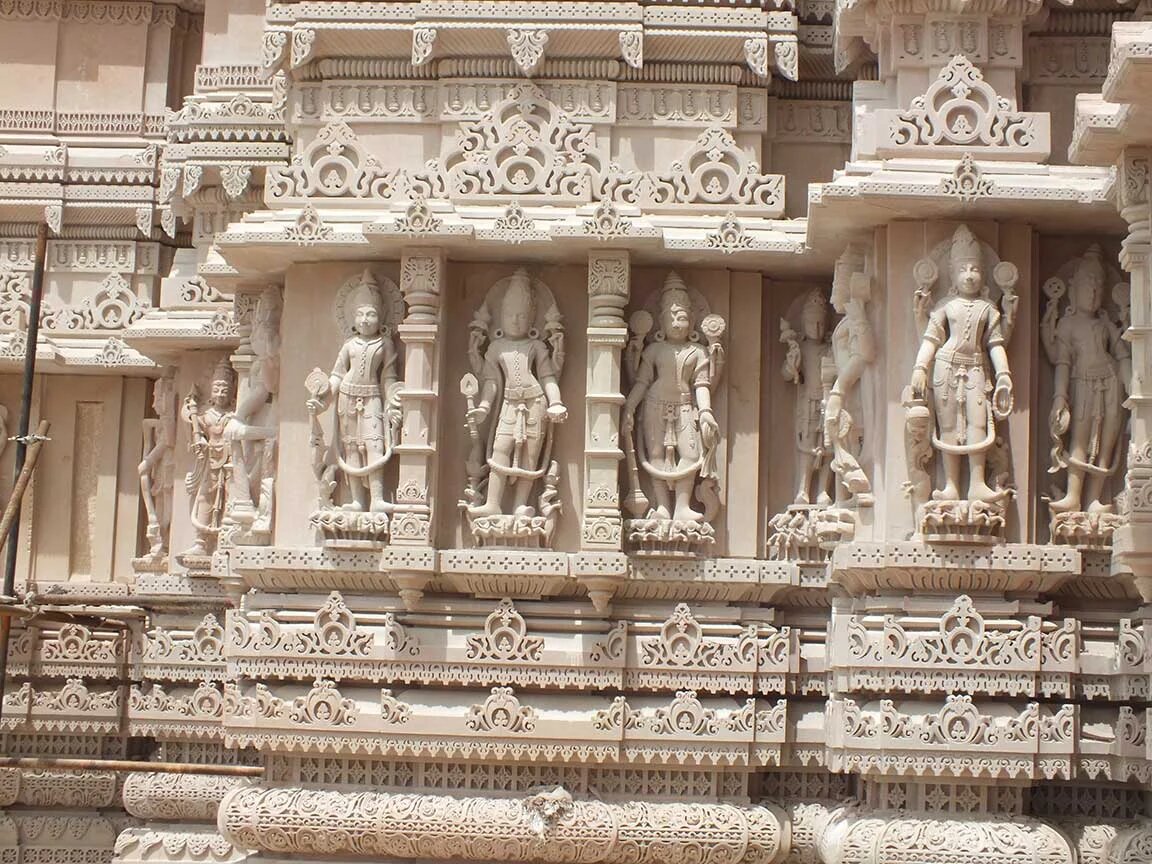
The plinth is made 18 feet above the ground in the Khodaldham Temple, and a Kanpith (mahapith) is made above up to 6 feet 5 inches. Scripturally Gajathar, Ashwathar, Grasthar and Narathar are to be installed in the Kanpith, Which is also followed in the Khodaldham Temple. Grasthar is the fifth layer in theKanpith. Gaj means elephant and Ashwa means horse and the meaning of Gras lies in ancient scripture. Centuries ago an aquatic animal use to live on both water and land. By the time these species extinguished from the earth, the creatures was known as gras.
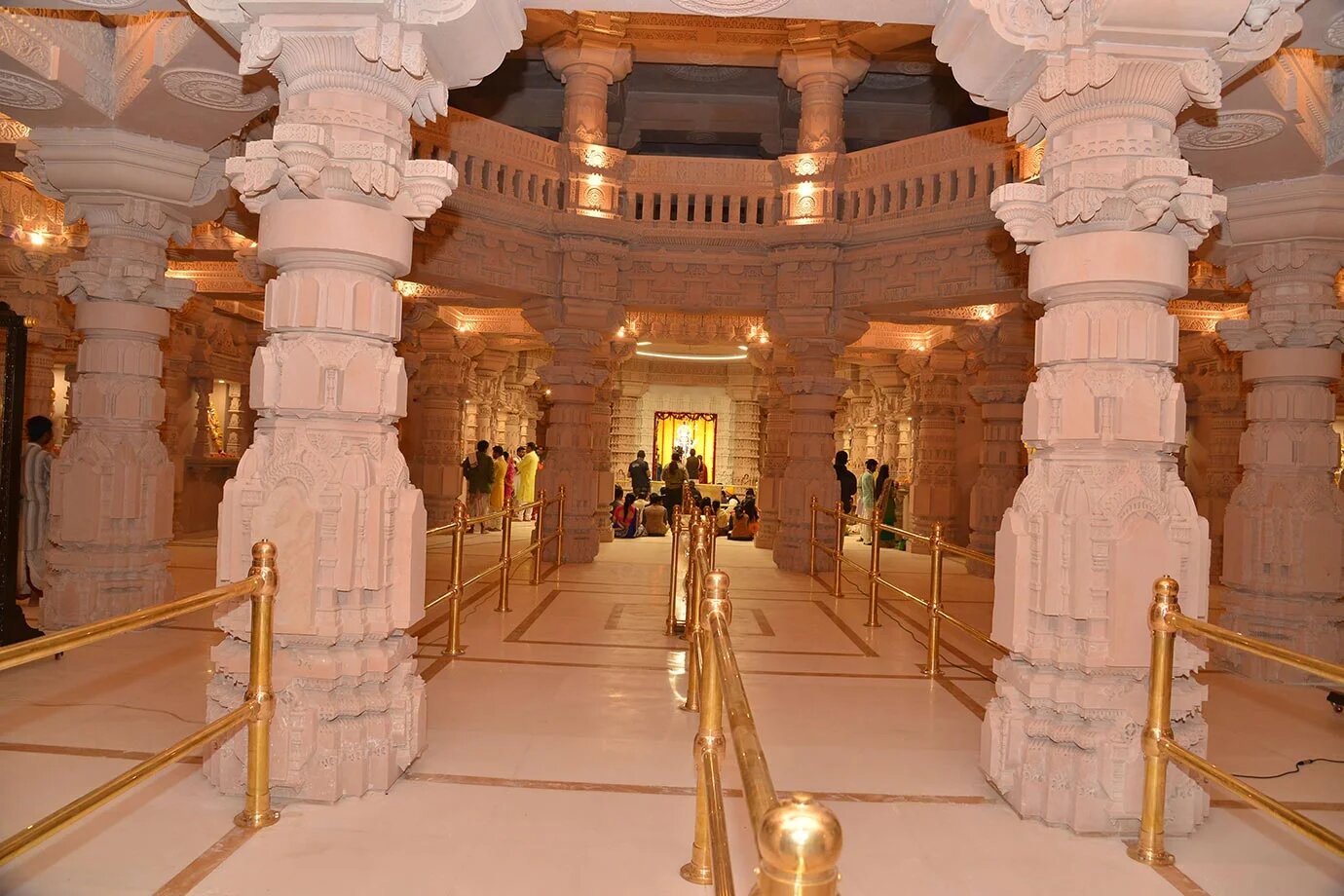
The events of Ramayana, Mahabharata and Gita have been inscribed on Narthar in Kanpith. 37 stones are engraved for the depiction of the Ramayana occasions, 15 stones for the Mahabharata events. From Vyasaji makes Ganpati to write Mahabharata to the occasions ranging from the Pandavasâ exile. Likewise many occasions of Srimad Bhagavad Gita have been engraved in 12 stones. In a total of 72 pink stones in Narthar, the events of the Ramayana, Mahabharata and Gita have been exhibited.
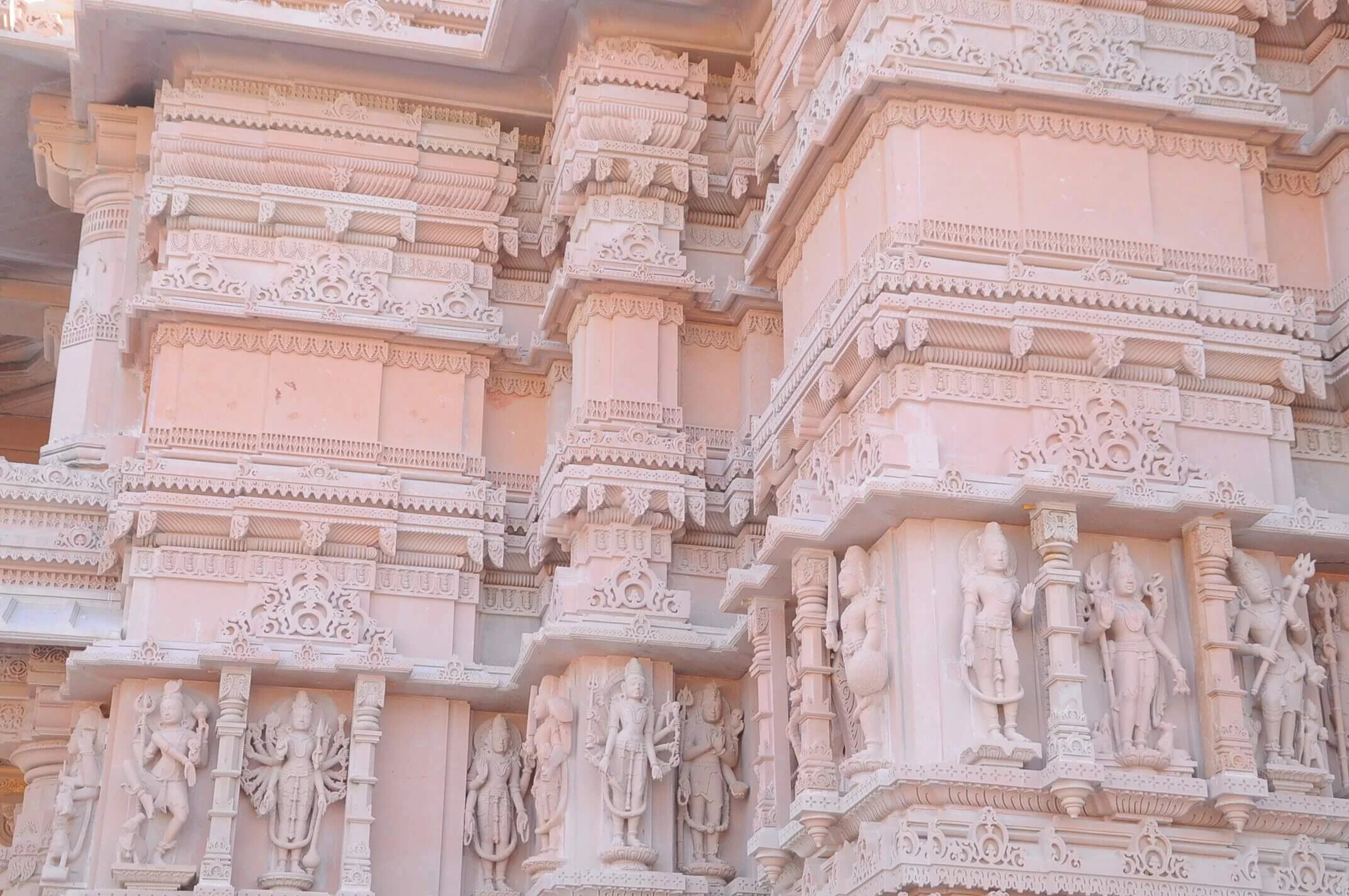
Mandovar means a conical wall of the temple that covers the sanctuary from the outside. In this way, the mandavar, i.e. the section from the back of the head to the head of the chhajja, is called mandovar. The temple of Khodaldham has a double paved mansion with a mandar. Inside the temple, there are statues of Parvati, Mahisasur Mardani, and statues of Mataji including Maa Amba. Ganpati is sitting in the saddle of Mandovar. In Jangi, the temple is adorn with 10 avatars of Vishnu and 24 forms, 12 forms of Surya, 8 forms of Saraswati, 4 of Brahmaji, 20 of Parvati, 12 forms of Shivaji and three-by-three-foot statues of Bhairavji.
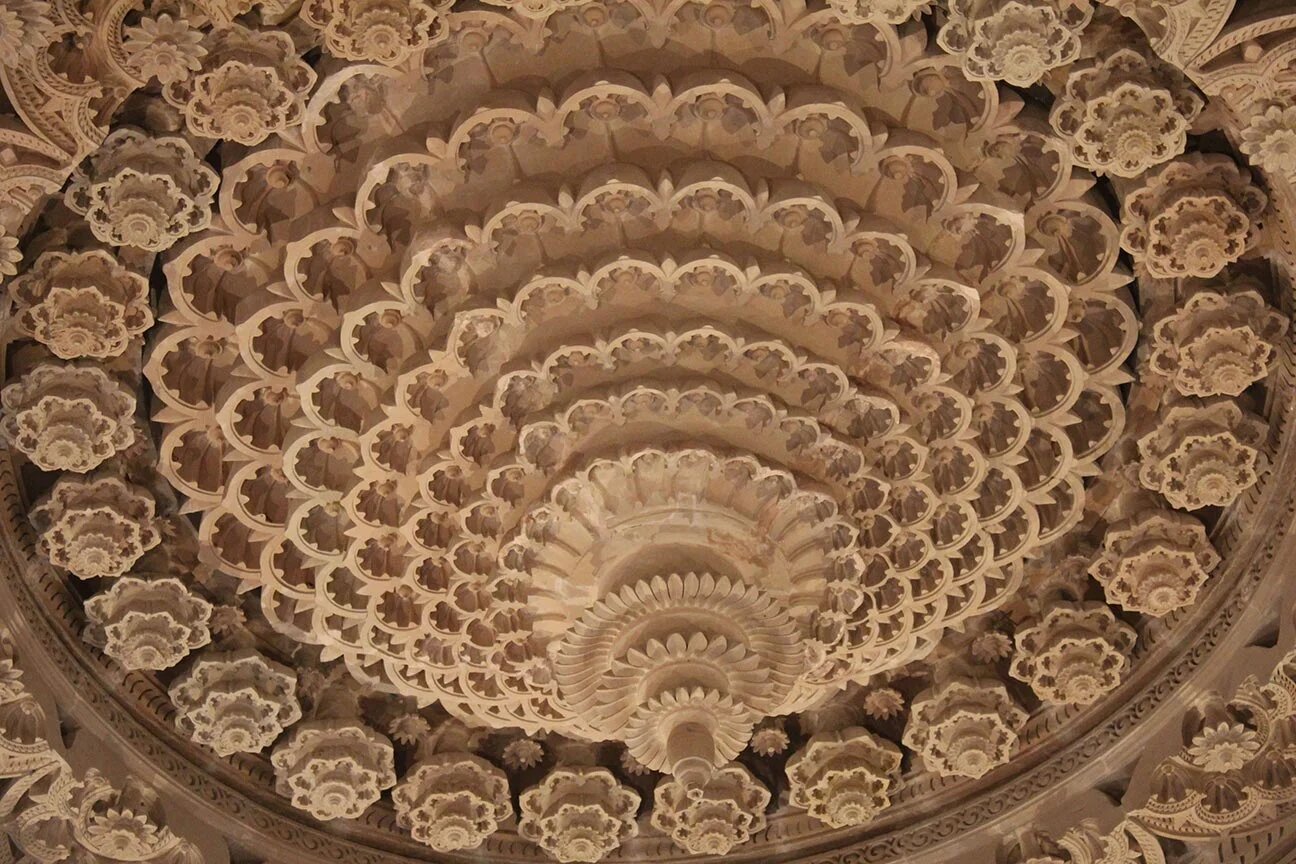
As we step up towards the Khodaldham temple the first dome comes over the Nrutya Mandap. Then we climb the threshold to enter. We get darshan of main dome. In the main artistic dome of the Khodaldham temple there are 16 statues including four corners, four directions and includes statues of eight forms of Surya.